
HUNGARIAN FEDERATIONS
The first Hungarian socialist club was organized in New York City in 1894. Another organization sprung up in Cleveland, where it briefly published a socialist newspaper called Hajnal (Dawn). Another paper was subsequently started, following the line of the SLP, called Amerik a Magyar Nepszava [Voice of the Hungarian People in America], but it soon went into the hands of a Hungarian printer, who changed its policy.
In 1900 there was a split among the fledgling Hungarian organizations. "The Workingmen's Sick Benefit and Educational Federation" emerged from this division, touting as many as 60 active branches around the country.
In May of 1903, a third socialist Hungarian paper was established, Nepakarat [Will of the People]. This publication affiliated with the Socialist Labor Party when the Hungarian movement split again in October of 1904. Those Hungarians loyal to the Socialist Party of America (SPA) founded another paper of their own, Elöre [Forward], which began as a monthly before becoming a weekly in 1907. There was no formal affiliation of the Hungarian socialist movement with the Socialist Party at this time.
In 1911 there was a short-lived unification of Hungarian socialists loyal to the SPA with groups deserting the SLP. The "United Hungarian Federation" was established. Those formerly affiliated with the SLP differed on the question of political action, however, and soon departed to reorganize themselves as branches of the IWW.
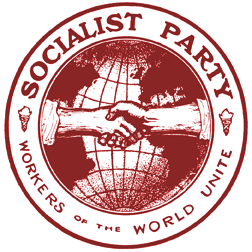
In 1912, a majority of the United Hungarian Federation voted to formally affiliate with the SPA, thus becoming the Hungarian Socialist Federation of the Socialist Party. Affiliation became formal as of September 1, 1912. At the time of affiliation, the Hungarian Federation claimed to have had 20 branches with a membership of about 700. Eight months later, the Translator-Secretary of the group, Armin Loewy, counted 34 branches with "about eleven hundred members" -- although the hard count of dues stamps actually sold during the period averaged 712 per month.
A good percentage of the Hungarian Federation's growth was linked to a national tour by a paid party organizer, Mary Gardos of Budapest. Traveling the breadth of the country from Oct. 18, 1912, to the first of April, 1913, six branches with 140 members was directly attributed to her organizing efforts.
The Hungarian Socialist Federation was governed by an Executive Committee of 7, with 3 alternate members. The body met 20 times over the first 8 months of affiliation with the SPA. The Federation owned a 51% stake in the newspaper Elöre, which became a daily in November of 1912.
The Executive Committee of the Hungarian Socialist Federation determined that it would divide the country into four districts, each of which was to be headed by a paid District Secretary, who would serve in the function of party organizer. Four district conferences were held to work out the details of this arrangement, with sessions held in 1913 in New York, Cleveland, Chicago, and San Francisco.
The Hungarian Federation translated and published several titles during its first year of affiliation with the SPA, including 20,000 copies of the organization's constitution, The Growing Grocery Bill by Allan S. Benson, Christianity and Social Democracy by Karl Kautsky, and Why a Woman Should be a Socialist by Theresa S. Malkiel.
In 1915 the Hungarian Federation of the Socialist Party claimed to have more than 40 branches and a total membership in excess of 1,500. The Federation, governed by a National Executive Committee, published a total of 18 books and pamphlets and distributed thousands of leaflets during its first four years of affiliation with the SPA.
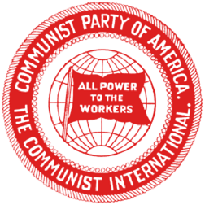
The Hungarian Federation associated with the CPA held a Convention in November of 1919; Charles Ruthenberg attended on behalf of the CEC of the party.
By the end of 1920, there were no remaining Hungarian units affiliated with the Communist Party anywhere in the US, according to a UCP organizer who toured the country on behalf of his organization.
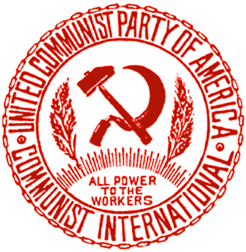
By late 1920, the CPA had absolutely no Hungarian organization, but the United Communist Party was in the process of building. In conjunction with the legal Hungarian communist paper Elöre [Forward], the party sent an organizer on the road for over 11 weeks, attempting to establish Hungarian language party groups. A total of 15 new groups were established in Pittsburgh, Chicago, Detroit, and elsewhere, according to the report of this organizer. Additional groups could not be formed due to the previous existence of the American Hungarian Workers Federation, a left wing membership organization which collected monthly dues of its own, making the cost of dual memberships prohibitive.
In December of 1920 the UCP had just 17 of its 673 primary party units ("Groups") which used Hungarian.
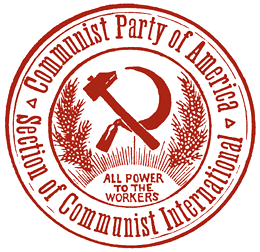
In late 1921, during the 5 months between formation of the unified CPA and the split of the Central Caucus faction, the Communist Party's Hungarian Federation had an average monthly paid membership of only 70, making it the smallest of the 10 Language groups in the party.
The Secretary of the Hungarian Federation in mid-1922 was "J.D. Hod."
During 1922, both the legal and illegal arms of the the Hungarian Federation conducted a "cleansing process" resulting in a series of explulsion of "parasites and other morally unreliable persons." According to secretary of the Left Wing Cleveland branch, "The undesirable element was swept out, not for differences of opinion or tactics as they claim, but for geing generally unrelaible." These expulsions were in the process of being undone by the national office of the Hungrarian Federation, it was charged. "Should they succeed in this then the true communists will not be able to remain in the movement or else it will lead to further strife and wrangling which might competely destroy the movement," the Cleveland secretary warned.
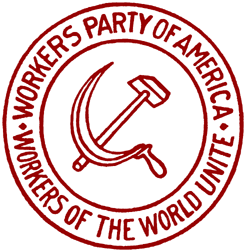
The Workers Party of America maintained a Hungarian Language Section.
A 1922 convention elected the following seven as a new Bureau of the Hungarian Language Section of the WPA, names which were confirmed by the Central Executive Committee of the WPA at its Jan. 3, 1923 session: J. Bartell, J. Bender, D. Hagnal, J. Lassen, V. Masanek, H. Mauthner, and E. Stiener. Alternates were: J. Becker and L. Eber.
The December 1922 convention of the Hungarian Section of the WPA heard reports from Alexander Bittelman, representing the CEC and Benjamin Gitlow, representing the CEC minority. After hearing both reports, the convention discussed th various issues raised before declaring itself "unqualifiedly in favor of the position and thesis of the minority group of Comrades Ruthenberg and Lovestone." The convention came out in favor of continued application of the Farmer-Labor Party slogan, of an "energetic campaign to root out all vestiges of the Second-and-a-Half International ideology," of stict party control of all party organs so that there may be no repetition of the left social democratic points of view being represented and defended in our press," and of "Bolshevizing the party through a thorough Marxian-Leninistic education" and "a complete reorganization of the party on the basis of shop nuclei."
Israel Amter also addressed the gathering, with a press report noting "A special invitation was extended to him by the convention. He was very warmly received. Thunderous applause and a tremendours demonstration greeted Comrade Amter when he mentioned the name of Comrade Pepper and his services to the Workers Party, in particular, and the Communist International in general."
The Socialist Labor Party maintained a Hungarian Federation -- an organization which comprised approximately 10% of the entire SLP in the early 1920s. The Hungarian Federation had an average paid membership of 317 in 1920 and 258 in 1921. Only round claimed numbers were published for 1922 (200) and 1923 (250) -- figures which should be accepted only with caution. The Federation had two districts during the early 1920s -- one encompassing Greater New York and Connecticut, the other Ohio. The Federation was particularly strong in Cleveland and Akron, Ohio, cities with sizeable Hungarian immigrant communities.
The Hungarian Socialist Labor Federation published its own weekly newspaper, A Munkas [The Worker], which had between 100 and 200 subscribers and a total press run in the vicinity of 2,000 during the first half of the 1920s. Editor of A Munkas was Alex Kudlik in 1921-22 and Theodore Vaszily, effective September 1922. The latter also served in the role of paid National Secretary of the HSLF from that date.
The Hungarian Socialist Labor Federation published five leaflets and five pamphlets during the period 1920-1924, including both original works and translations of English-language material.
[fn:Alex Kudlick: "Hungarian Federation," in 16th National Convention, Socialist Labor Party, May 10-13, 1924: Minutes, Reports, Resolutions, Platform, Etc., pp. 85-87.]
"Report of Committee on Foreign Speaking Organizations to the National Convention of the Socialist Party, May 17, 1908." Committee report to the 1908 SPA Convention in Chicago, delivered by S.A. Knopfnagel. The Committee advocated the acceptance of all foreign language organizations seeking affiliation with the Socialist Party, subject to 5 conditions: "(1) They are composed of Socialist Party members only. (2) Any foreign speaking organization having a national form of organization of its own be recognized only if all the branches composing this organization having been chartered by the national, state, or local Socialist Party organizations, and pay their dues to the respective Socialist Party organizations. (3) No foreign speaking organization asking the Socialist Party for recognition shall issue their own particular national, state, or local charters. Same to be issued only by the respective organizations of the Socialist Party, as the case may require. (4) All foreign speaking organizations affiliated with the Socialist Party must and shall conform in every respect with the Socialist Party national, state, and local constitutions, platforms, and resolutions. (5) They should function only as agitation, education, and organization bureaus of the Socialist Party." Includes an amendment made from the floor but not published in the SP's Official Bulletin (probably due to incompetence rather than malice) prohibiting the refusal of admission to the SPA on account of race or language.
1913
MAY Report of the Hungarian Socialist Federation to the National Committee of the Socialist Party of America, May 1913," by Armin Loewy. The Hungarian Socialist Federation was formed when the United Hungarian Federation voted to affiliate with the SPA in 1912. This first report of the Translator-Secretary of the Hungarian Federation to the 1913 plenum of the SPA's National Committee details the organization's activities in the first 8 months of affiliation. Included is an interesting table detailing size, number of iniitiations, number of meetings held, and amounts spent on dues stamps, the Hungarian socialist press, and literature by each of the component branches of the Hungarian Federation.
1919
JUNE "Scuttling the Ship: A Statement of the Seven Suspended Language Federations, June 2, 1919." This is the joint protest statement of the 7 affected Language Federations of the SPA (Russian, Lithuanian, Ukrainian, Polish, Hungarian, South Slavic, and Latvian) in response to the May 27 action of the party's National Executive Committee to unilaterally suspend the entire memberships of these organizations. The "autocratic 7" members of the National Executive Committee who approved this action on "over 30,000 dues payers" are rebuked for failing to provide notification, time for preparation, or a trial. In addition, the NEC bloc of 7 suspended the party elections and expelled the Michigan organization of nearly 6,000 without trial, locked up the party headquarters in the hands of a private holding company outside of party control, and arbitrarily threw the Translator-Secretaries of the affected federations out of party headquarters without allowing time for them to locate new quarters. "In short, this group of seven National Committeemen, drunk with power they assumed, feeling aggrieved because these federations dared to criticize the National Executive Committee, made themselves guilty of an act which will discredit them forever in the International Socialist movement," the joint statement charged.
JANUARY "Report of Hungarian Organizer," by J. Burok" [January 12, 1921] In October of 1920, the United Communist Party and the legal Hungarian-language Communist paper Elöre sent organizer J. Burok on the road to firm up connections for distribution of the Hungarian language press and to establish groups for the underground UCP. Burok established a total of 15 groups during his 11 1/2 week mission -- 5 in Pittsburgh, 4 in Chicago, 2 in Detroit, and 1 each in Cleveland, Newark, Milwuakee, and West Pullman, IL. This is the report which Burok wrote upon completion of his task. The document was originally composed in Hungarian but was seized by the Department of Justice in the April 29, 1921 raid on the New York apartment of Helen Ware (the Lindren/Jakira/Amter case). The Federal agents translated the document into English and preserved it in their archives, thus preserving the information for future historians. Burok complains that existing branches of another left wing membership organization, the American Hungarian Workers Federation, reduced the number of groups he was able to form -- the cost of monthly dues to both organizations being prohibitive. Burok recommended a drastic reduction of the UCP dues rate for members of such organizations.
"Membership Series by Language Federation for the Workers Party of America. 'Dues Actually Paid' -- January to December 1923." Official 1923 data set of the Workers Party of America, compiled from a document in the Comintern Archive. This series shows a great numerical dominance of the WPA by its Finnish Federation, accounting for a massive 42.8% of the average monthly paid membership of the organization (6,583 of 15,395). The total of the English language branches is the 2nd strongest amongst the federations (7.6%) followed by the South Slavic (7.5%), Jewish [Yiddish language] (6.9%), and Lithuanian (6.0%) Federations. In all, there were statistics kept for 18 different language groups of the WPA in 1923, including the English and the barely organized Armenian sections.
"Initiation Stamps Sold by Federation for the Workers Party of America. January to December 1923." Official 1923 data set of the Workers Party of America, compiled from a document in the Comintern Archive. This series once again (repeating the previous published 1924 series) shows a schizophrenic pattern of stamp sales among language groups . Some federations clearly did not collect the initiation fees called for in the WPA constitution at all (Jewish, German, Latvian) while at the same time the quantities sold via the English branches are ridiculously high. Over 53% of the initiation stamps sold for the entire WPA were credited to the English branches -- nearly three times as many initiations than there were average duespayers in those English branches! Even assuming a significantly higher than average "membership churn" rate for English branches, there is clearly some other unexplained phenomenon at play in these English branch initiation stamp sale figures...
"Membership Series by Language Federation for the Workers Party of America. 'Dues Actually Paid' -- January to December 1924." Official 1924 data set of the Workers Party of America, compiled from a document in the Comintern Archive. This shows a continued numerical dominance of the Workers Party of America by its Finnish-language federation, averaging a paid membership of 7100 (41% of the entire organization) for the year 1924. Impressive growth is shown by the Yiddish-language ("Jewish") federation, which moved to the third largest language group in the WPA in 1924. The English branches comprised the second largest language group in the WPA, but still remained just 11% of the overall organization. The South Slavic federation (predominately Slovenian and Croation) was the 4th largest language group in the WPA, topping the Russian, Lithuanian, and Ukrainian federations.
"Initiation Stamps Sold by Federation for the Workers Party of America. January to December 1924." Official 1924 data set of the Workers Party of America, compiled from a document in the Comintern Archive. An extremely interesting monthly series in which two unexplained anomalies are apparent: (1) The failure of at least 8 of the WPA's 18 language sections to make more than a token effort to collect the $1 initiation fee and obvious similar behavior (to lesser degree) among branches of other language groups; (2) A preposterously large sale of 5,264 initiation stamps to "English" branches, which averaged a paid membership of just 1909 over the course of the year. Either there was a revolving door in the English branches that was entirely dissimilar to the situation in any other language group of the WPA; or there was some sort of effort to collect initiation fees among "English" workers without organizational follow up; or there was some sort of strange accounting practice used by the WPA in which miscellaneous sales of initiation stamps were lumped into the "English" category (or some combination of these explanations). A perplexing question in raised, with further archival research clearly necessary.
APRIL Report of the Hungarian Socialist Labor Federation to the 16th National Convention of the SLP, April 9, 1924," by Alex Kudlik. The Acting Secretary of the Hungarian Federation of the Socialist Labor Party reports to the national convention about the activities of his organization since the previous party conclave, held in 1920. Includes membership information (in round terms 250 paid members in 1924 -- or about 10% of the entire SLP), details about publications produced, and a general outline of organizational activities.